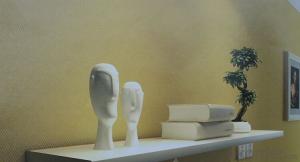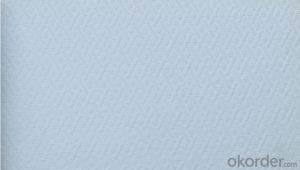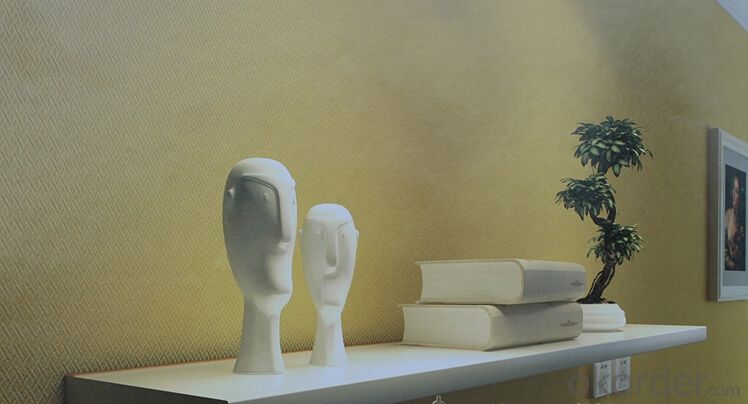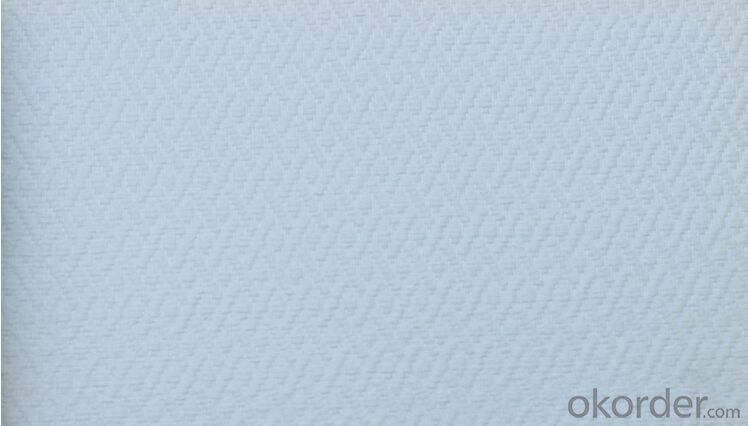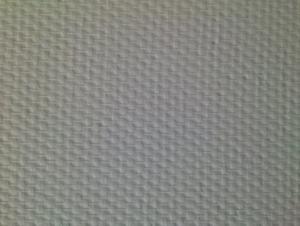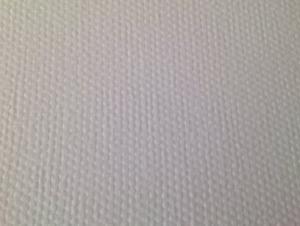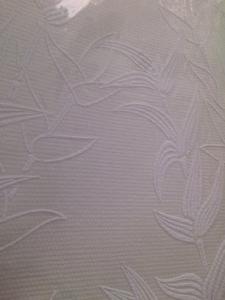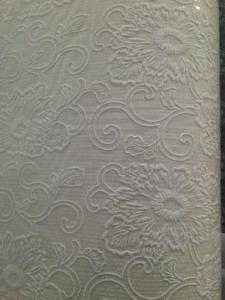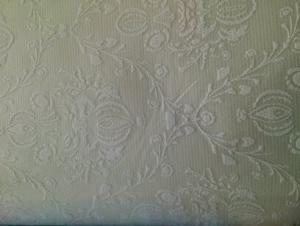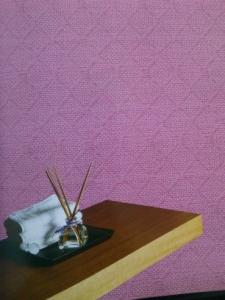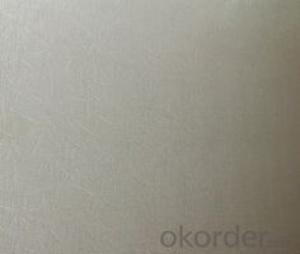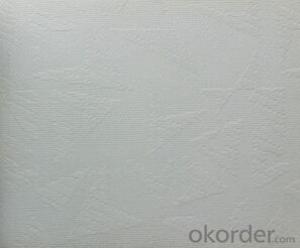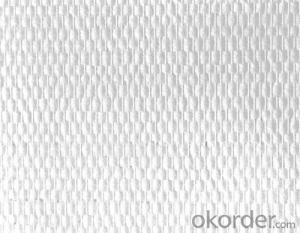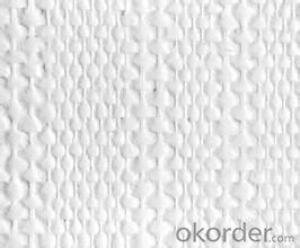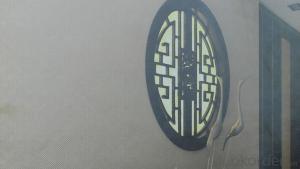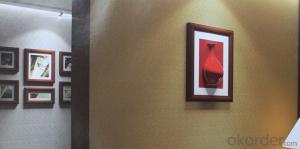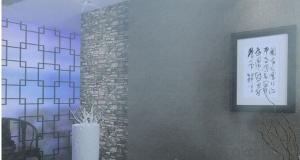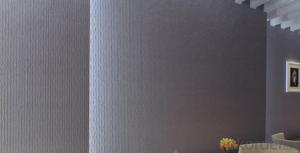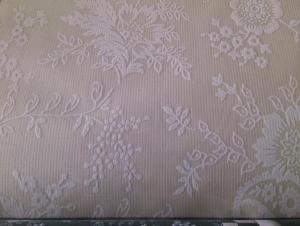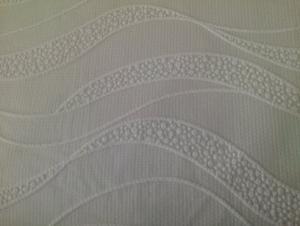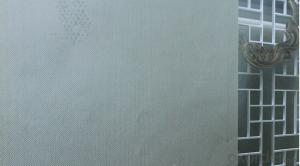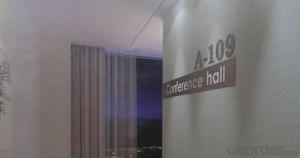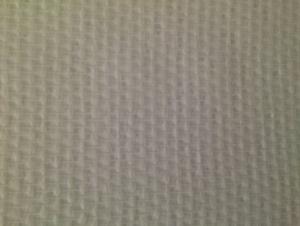Fiberglass Wallcovering Cloth 82703 - Great Quality
- Loading Port:
- Shanghai
- Payment Terms:
- TT OR LC
- Min Order Qty:
- 100 m²
- Supply Capability:
- 100000 m²/month
OKorder Service Pledge
OKorder Financial Service
You Might Also Like
Great Fiberglass Wallcovering Cloth 82703
Specification of Wallcovering Cloth
.Environment-friendly
.Flame retardent
.Air permeability
.Waterproof
.Anti-corrosion
.Imcomparable strength
.Abundant patterns and colors
.Long life time
Packing Details
.Width:1m
.Length:25/50m
.Each roll of wallcovering cloth is wrapped in a shrinking polythene film,then put in carton
Introduction of wallcovering Cloth
Fiberglass wallcovering cloth,that combines the versatility of paint,from latex to epoxy,with the
strength and benefits of woven fiberglass textile yarns to meet the most demanding wall finish
requirments.Fiberglass textile yarns,as a kind of natural materials,are woven into various textures
and patterns and then treated with a natural starch binder for dimensional stability during the hanging
process.
Compared with traditional wall papers,fiberglass wall covering cloth has the following advantages:
Environment friendly,Flame Retardant,Air Permeability,Shock Resistance,Waterproofing,Anti-corrosion,Abundant Colors&Patterns.
Product Show
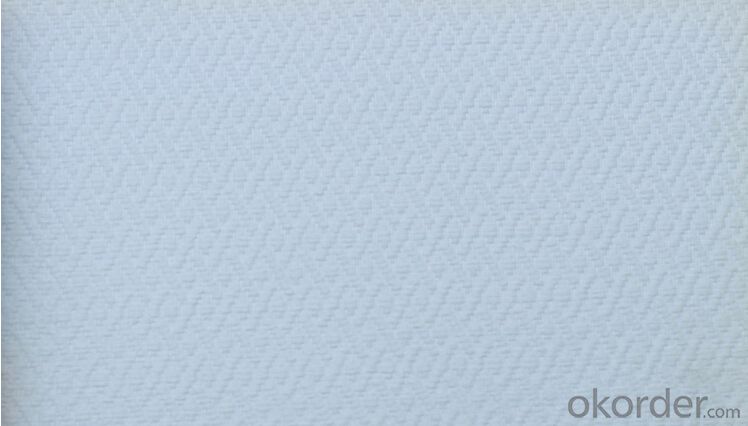
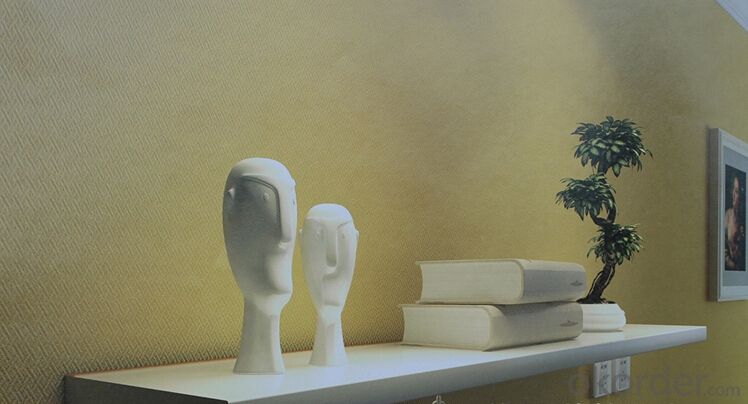
Application of Wallcovering Cloth
As a high-tech indoor decorating material,fiberglass wallcovering cloth is widely used in resident homes,
offices and shops and even cinemas,theatres,hotels and hospital faclilties,air ports,office buildings,shopping centers and schools.
Test Report
Our product has passed test by SGS as follows:
EN 12956:for determination of dimensions,straightness,spongeability and washability.
EN 12149:for determination of magration of heavy metals and certain other elements,of
vinyl monomer and of formaldehyde release.
EN 20105-B02:light solidity.
Our products had passed test of Fire Retardancy M1 Class by LINE
- Q: What are the different types of finishes available for fiberglass wallcovering cloth?
- Fiberglass wallcovering cloth comes in various finishes, each with its own unique characteristics and advantages. 1. Achieving a smooth finish involves using a fine weave fiberglass cloth and applying a smooth topcoat. This results in a wall surface that is clean and seamless, without any texture or pattern. 2. Textured finishes add depth and dimension to the fiberglass wallcovering cloth. By applying different patterns and textures such as linen, canvas, or stucco, a visually interesting and tactile surface can be created. 3. To achieve a metallic finish, metallic flakes or pigments are incorporated into the topcoat. This creates a shimmering and reflective appearance, adding a touch of sophistication and elegance to any space. 4. A matte finish provides a subtle and soft appearance to the fiberglass wallcovering cloth. It reflects less light compared to other finishes, creating a more understated and muted effect. 5. Gloss finishes are highly reflective, creating a polished and glossy surface. This type of finish can enhance the overall brightness in a room and bring a touch of modernity. 6. Faux finishes imitate the look and texture of other materials such as wood, stone, or brick. By using fiberglass wallcovering cloth with faux finishes, you can achieve the appearance of these materials at a lower cost and with added durability. These different finishes offer a wide range of options to cater to various design preferences and applications. Whether you desire a smooth and seamless appearance, a textured and tactile surface, or a reflective and glamorous finish, there is a fiberglass wallcovering cloth finish available to meet your needs.
- Q: Can fiberglass wallcovering cloth be applied over existing wallpaper?
- Yes, fiberglass wallcovering cloth can be applied over existing wallpaper. It provides a durable and stable surface for the new wallcovering and helps to hide any imperfections or patterns from the previous wallpaper.
- Q: Does fiberglass wallcovering cloth provide insulation?
- Fiberglass wallcovering cloth offers a certain degree of insulation. This cloth is crafted from delicate glass fibers, which possess excellent insulating properties. These fibers trap air pockets, establishing a thermal barrier between the wall and the room. This insulation aids in reducing heat transfer and can enhance energy efficiency by lessening the need for heating or cooling. Nevertheless, it is crucial to acknowledge that the insulation level provided by fiberglass wallcovering cloth is comparatively minimal when compared to alternative materials like foam or cellulose. It is more commonly utilized as an ornamental wall covering that also provides some insulation advantages. Moreover, the effectiveness of the insulation provided by fiberglass wallcovering cloth can be influenced by various factors such as the cloth's thickness, the installation technique, and the overall condition of the wall. Therefore, while it can contribute to insulation, it cannot replace proper insulation materials and techniques in achieving optimal energy efficiency in a building.
- Q: Is fiberglass wallcovering cloth suitable for commercial applications?
- Fiberglass wallcovering cloth is highly suited for commercial applications, offering numerous advantages that make it an ideal option for commercial spaces. Firstly, it is a remarkably durable material, capable of withstanding heavy traffic and wear and tear, making it perfect for high-traffic areas like offices, hotels, restaurants, and retail stores. In addition, fiberglass wallcovering cloth is resistant to moisture, mold, and mildew, making it suitable for areas with high humidity or where frequent cleaning is necessary. It also possesses fire-resistant properties, which are crucial in commercial buildings to ensure safety and compliance with regulations. Moreover, a wide range of designs, patterns, and colors are available for fiberglass wallcovering cloth, allowing for limitless customization options to meet the aesthetic requirements of any commercial space. It can imitate the appearance of various materials such as fabric, stone, or wood, providing a luxurious and upscale look without the associated expenses and maintenance. Furthermore, fiberglass wallcovering cloth boasts excellent acoustic properties, aiding in the reduction of noise levels in bustling environments. This feature is particularly significant in commercial spaces where privacy and a noise-free ambiance are essential, like conference rooms or medical facilities. Lastly, fiberglass wallcovering cloth is easy to install and maintain, saving time and costs associated with maintenance. It is also highly resistant to fading, staining, and scratching, ensuring a long-lasting and visually appealing finish. Overall, due to its durability, resistance to moisture and fire, extensive design options, acoustic properties, and ease of installation and maintenance, fiberglass wallcovering cloth is an exceptional choice for commercial applications.
- Q: Can fiberglass wallcovering cloth be used in exterior facade elements or cladding?
- Yes, fiberglass wallcovering cloth can be used in exterior facade elements or cladding. Fiberglass cloth is a versatile and durable material that is known for its resistance to moisture, chemicals, and extreme temperatures. These characteristics make it suitable for use in exterior applications where the cladding or facade elements are exposed to harsh weather conditions. Fiberglass wallcovering cloth can be used to reinforce and strengthen the exterior surfaces of buildings, providing added protection against impact, cracks, and other forms of damage. It can also be used to create a smooth and uniform appearance on the facade, enhancing the aesthetic appeal of the building. Furthermore, fiberglass cloth is lightweight and easy to install, which makes it a convenient choice for exterior cladding. It can be applied directly to various surfaces, including concrete, wood, metal, or even existing walls, making it a flexible option for different types of buildings and architectural designs. However, it is important to note that the success of using fiberglass wallcovering cloth in exterior facade elements or cladding depends on proper installation and maintenance. It is recommended to consult with professionals or manufacturers to ensure that the specific product and installation method are suitable for the intended application and meet the necessary building codes and standards.
- Q: Can fiberglass wallcovering cloth be used in conjunction with tile or other wall materials?
- Yes, fiberglass wallcovering cloth can be used in conjunction with tile or other wall materials. It can serve as a strong and durable backing for tiles, providing additional reinforcement and preventing cracking or damage. Additionally, it can be used to reinforce other wall materials, such as plaster or drywall, making them more resilient and long-lasting.
- Q: Can fiberglass wallcovering cloth be used in conjunction with textured wall finishes?
- Yes, fiberglass wallcovering cloth can be used in conjunction with textured wall finishes. The strong and durable nature of fiberglass allows it to be applied over textured surfaces, providing added strength and protection to the walls while maintaining the desired texture.
- Q: Can fiberglass wallcovering cloth be used in conjunction with wallpaper?
- Fiberglass wallcovering cloth can indeed be utilized alongside wallpaper. It is actually quite customary to employ fiberglass wallcovering cloth as an initial layer prior to the application of wallpaper. This cloth ensures a sleek and uniform surface, conceals any flaws in the wall, and enhances the resilience of the wallpaper. Furthermore, it aids in preventing the wallpaper from peeling or sustaining damage over time. Moreover, fiberglass cloth possesses fire-resistant properties and can offer supplementary insulation to the wall. Consequently, the fusion of fiberglass wallcovering cloth and wallpaper can greatly augment the overall aesthetic and lifespan of the wallcovering.
- Q: What is fiberglass wallcovering cloth?
- Fiberglass wallcovering cloth is a type of material made from interwoven glass fibers that is used for covering and reinforcing walls. It is commonly used in construction and renovation projects to provide strength, durability, and fire resistance to walls.
- Q: Is fiberglass wallcovering cloth suitable for use in hospitals or healthcare facilities?
- Yes, fiberglass wallcovering cloth is appropriate for use in hospitals or healthcare facilities. Fiberglass wallcovering cloth is a strong and hygienic material that is widely used in healthcare settings due to its numerous advantages. To begin with, fiberglass wallcovering cloth resists the growth of mold, mildew, and bacteria, making it highly suitable for environments where cleanliness is paramount, such as hospitals and healthcare facilities. This material is easy to clean and can withstand regular disinfection processes without deteriorating or losing its properties. Furthermore, fiberglass wallcovering cloth is known for its durability and strength. It can endure heavy traffic, impact, and abrasion, making it ideal for high-traffic areas in healthcare facilities. This material is also resistant to tearing, cracking, and peeling, ensuring that it maintains its appearance and functionality over time. Moreover, fiberglass wallcovering cloth is fire-resistant, which is crucial in healthcare settings where fire safety is of utmost importance. It meets strict fire codes and regulations, providing an additional layer of security. In addition, fiberglass wallcovering cloth offers a wide variety of designs, colors, and textures, allowing healthcare facilities to create a welcoming and pleasant environment for patients, staff, and visitors. It can be customized to match the desired aesthetic while still meeting the necessary performance requirements. In summary, fiberglass wallcovering cloth is a suitable option for hospitals and healthcare facilities due to its mold resistance, durability, fire-resistance, and design flexibility. Its qualities make it an outstanding choice for maintaining a clean and safe environment while also enhancing the overall appearance of the facility.
Send your message to us
Fiberglass Wallcovering Cloth 82703 - Great Quality
- Loading Port:
- Shanghai
- Payment Terms:
- TT OR LC
- Min Order Qty:
- 100 m²
- Supply Capability:
- 100000 m²/month
OKorder Service Pledge
OKorder Financial Service
Similar products
Hot products
Hot Searches
Related keywords
